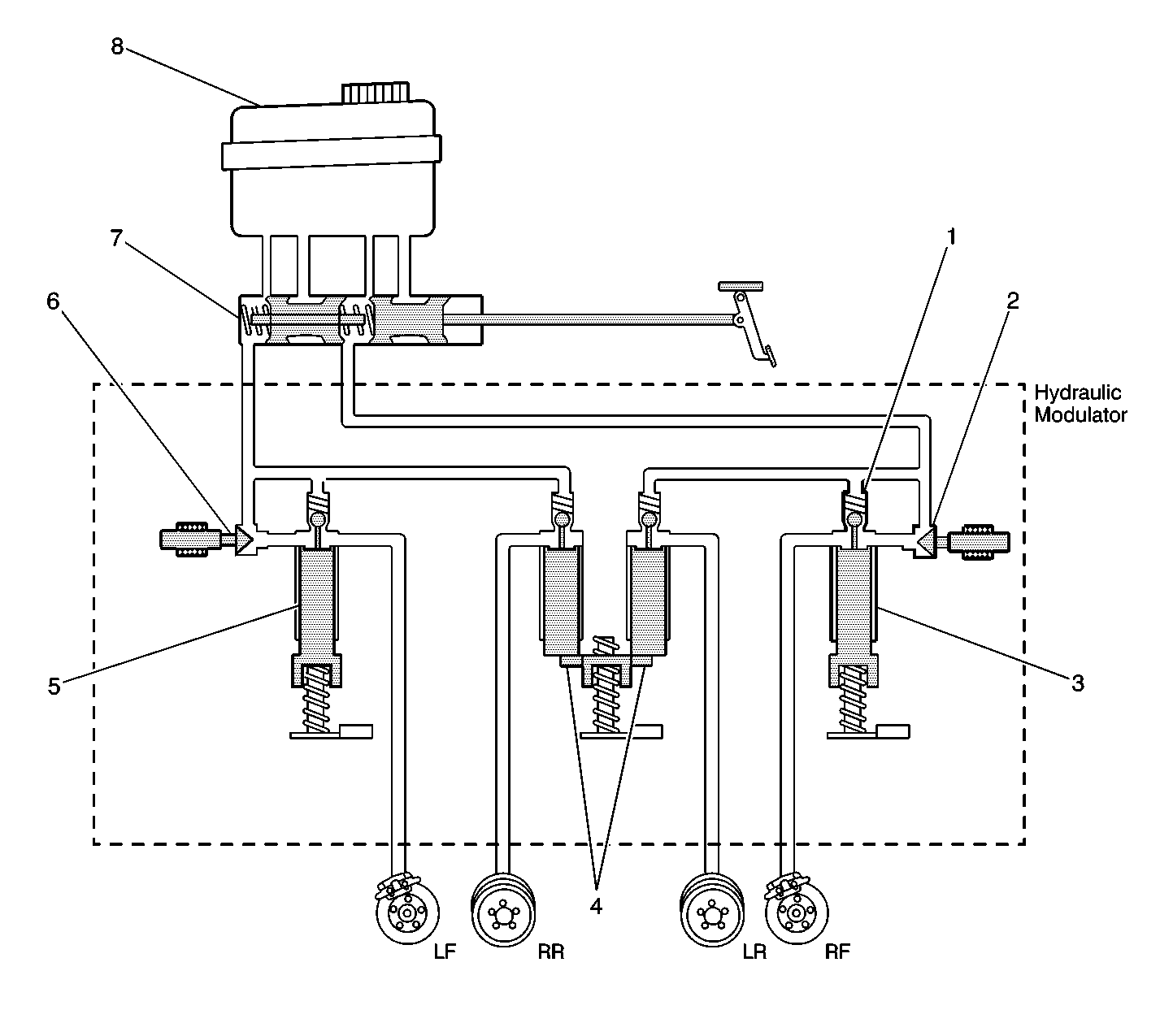The brake systems use conventional braking under normal operating conditions.
The following components are necessary for operation of conventional braking:
The brake fluid flows through the following areas in order to reach
the front wheels:
The brake fluid flows through the following areas in order to reach
the rear wheels:

